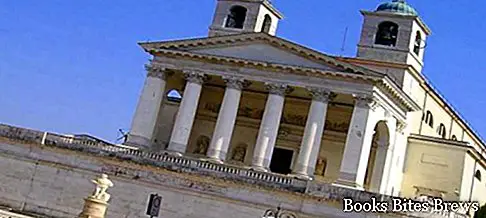What to see in Schio, itinerary including the main monuments and places of interest, including the Duomo, the Fabbrica Alta Lanificio Rossi, the Church of San Francesco, the ruins of the Castle and the Military Shrine.
Tourist information
City of Veneto located in the province of Vicenza at the mouth of the Val Leogra, along the stream that gives its name to the valley, Schio is surrounded by a typically pre-Alpine hilly landscape.
The toponym Schio seems to derive from an evolution of the term aesculetum, which in medieval Latin indicated a plant of the oak family (the Ischia) or a place planted with oaks.
In an area inhabited since prehistoric times, the urban center of Schio originated in 1123, following the transfer to the place called Gorzone, corresponding to the area where the Cathedral currently stands, of the Pieve di Belvicino, whose inhabited area had been overwhelmed by a 'flood.
In 1228, the village became a free municipality, then it was dominated by the Scaligeri and Visconti families.
In the period in which it was a possession of the Republic of Venice, Schio had a remarkable development thanks to the wool production.
The abundance of water in the area, optimized with the canalization system, favored the birth of various production activities, including, in 1726, that of a textile factory on the English model, founded by Nicolò Tron, a noble Venetian ambassador of the Serenissima at the British court.
During the nineteenth century the protagonists were Francesco Rossi and especially his son Alessandro, who transformed his father's wool mill into the largest Italian wool company, the Lanerossi, the fulcrum of the economy of the city of Scledense and of the whole surrounding area, so as to deserve the Manchester of Italy.
What see
Today the former Lanerossi area, the Fabbrica Alta, designed by the architect Auguste Vivroux, the working-class district and the monumental garden of the Lanificio Rossi, called Jacquard, represent an extraordinary example of industrial archeology.
The former Conte Wool Mill is also part of the city's industrial archaeological heritage, whose original nucleus located along the Roggia Maestra dates back to 1757, while on the first floor of the building there are exhibition spaces to visit.
Of very ancient origins are the current building of the Cathedral of San Pietro, dating from the eighteenth century but remodeled and enriched during the nineteenth century, and the Church of San Francesco dating from the fifteenth century, which constitutes one of the oldest and most significant monuments of the city , both are part of the religious heritage of the city.
Recommended readings- Veneto: Sunday day trips
- Schio (Veneto): what to see
- Vigo di Cadore (Veneto): what to see
- Vittorio Veneto: what to see
- Agordo (Veneto): what to see
Inside the Church of San Francesco is the famous Francesco Verla Altarpiece, dedicated to the wedding of Saint Catherine of Alexandria and dating back to 1512.
On the hill overlooking the historic center, near the ruins of the ancient castle which was destroyed in the 16th century, stands the former church of Santa Maria della Neve, currently deconsecrated.
In the surroundings of Schio there is the Military Shrine of Valli del Pasubio, an evocative monument in memory of the fallen in the Great War.




